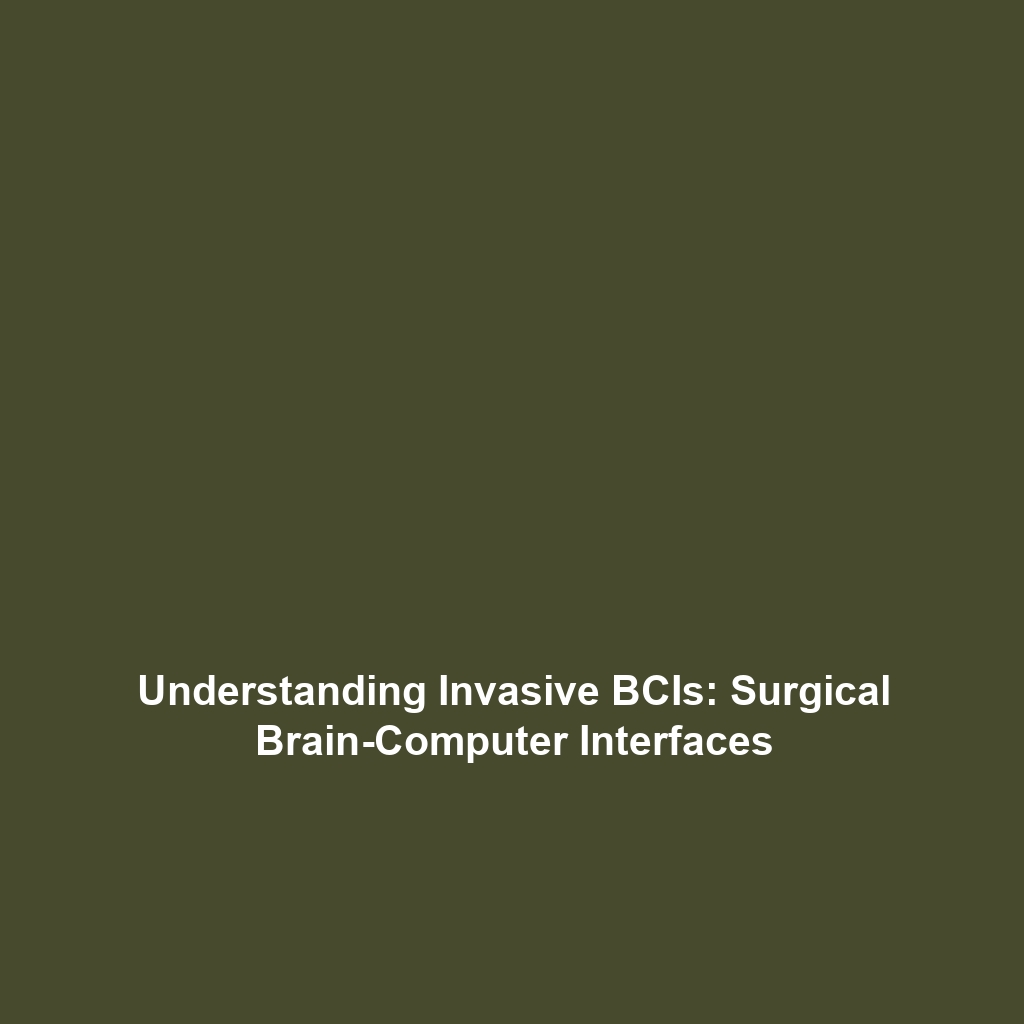Human-Computer Interaction: Bridging Minds and Machines
Introduction
Human-Computer Interaction (HCI) is a pivotal field that examines how people interact with computer systems. As technology advances, HCI’s significance becomes increasingly pronounced, especially in relation to Brain-Computer Interfaces (BCIs). BCIs innovate how humans connect with machines, offering new pathways for communication and control. This article delves into the crucial intersections of HCI and BCIs, highlighting their importance in enhancing usability, accessibility, and overall user experience.
Key Concepts of Human-Computer Interaction
Understanding HCI requires a grasp of several foundational concepts:
- User Interface (UI): The visual elements through which users interact with a system.
- User Experience (UX): The overall experience a user has while interacting with a product, emphasizing satisfaction and usability.
- Accessibility: The design of products that are usable by people with a wide range of abilities and disabilities.
Within the context of Brain-Computer Interfaces, these concepts transform significantly. BCIs aim to interpret neural signals, enabling direct communication between the brain and various devices. In this realm, HCI principles guide the development of intuitive interfaces that can be navigated effectively by users relying on neurological input.
Applications and Real-World Uses
The applications of Human-Computer Interaction in Brain-Computer Interfaces are groundbreaking. Significant uses include:
- Assistive Technologies: BCIs are utilized to help individuals with disabilities control devices like wheelchairs or computers solely with their thoughts.
- Gaming and Entertainment: Innovative BCI systems enhance user immersion by allowing players to interact using cognitive engagement.
- Neurofeedback Training: HCI techniques enable users to control virtual environments in real-time based on their brain activity for therapeutic purposes.
How Human-Computer Interaction is used in Brain-Computer Interfaces exemplifies the potential for improving user agency and accessibility.
Current Challenges in Human-Computer Interaction
Despite the advancements, there are still challenges of Human-Computer Interaction applicable to the realm of Brain-Computer Interfaces:
- Signal Noise: Neural signals can be noisy, making it difficult to accurately interpret user intentions.
- User Adaptation: Users may require extensive training to effectively utilize BCI systems.
- Usability Concerns: Designing intuitive interfaces remains a critical challenge, as traditional HCI methods may not apply directly to neural inputs.
These limitations highlight ongoing issues in developing effective Brain-Computer Interfaces that provide seamless interactions.
Future Research and Innovations
The intersection of Human-Computer Interaction and Brain-Computer Interfaces is poised for exciting innovations:
- Adaptive Learning Systems: Future research is focused on creating BCIs that adapt to individual users’ brain patterns over time.
- Integration with AI: Machine learning algorithms are being investigated to enhance prediction accuracy in interpreting neural signals.
These breakthroughs could revolutionize how we think about user interaction and pave the way for more intuitive Brain-Computer Interfaces.
Conclusion
Human-Computer Interaction plays a critical role in the development of Brain-Computer Interfaces, providing essential insights that enhance usability and accessibility. As research continues to evolve, it is essential to address current challenges while fostering innovations that hold promise for the future. For further exploration of related topics, consider visiting our pages on Assistive Technologies and Neural Engineering.

